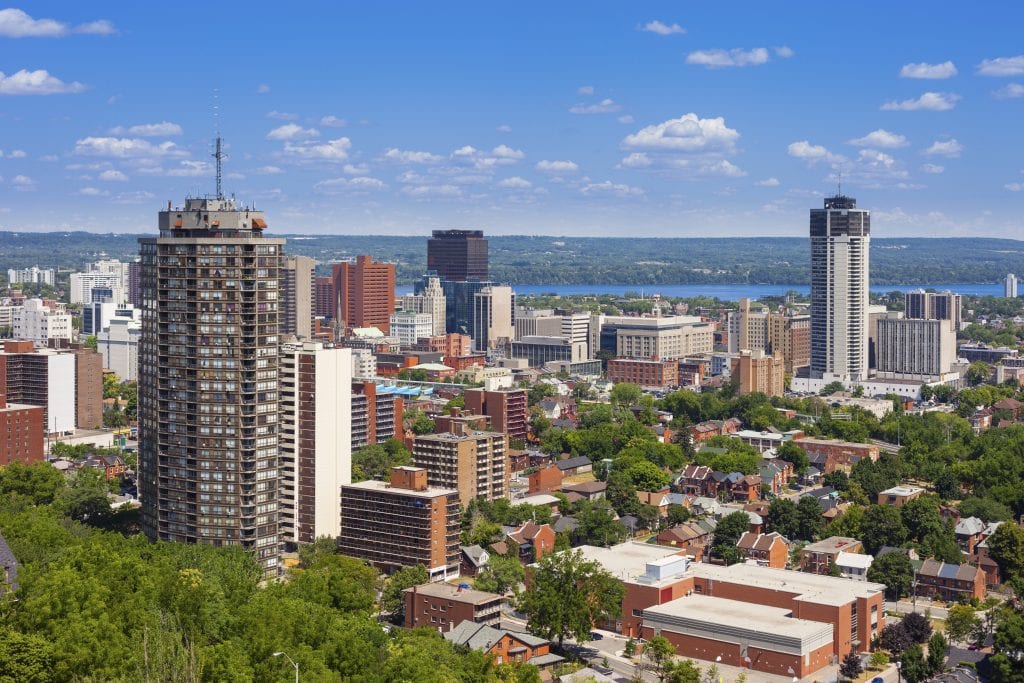
It was a very action-packed year for Hamilton’s real estate market, filled with many ups and many downs. Real estate experts anticipated a red-hot year for Hamilton’s real estate market, and by any measure, that’s what occurred. On the other hand, economists expected the Canadian economy to continue to grow very slowly, as it was still reeling from the effects of the 2015 oil crisis as well as the 2008 Great Recession. Bankers expected interest rates to remain unchanged as we were still trying to dig our way out of this slow growth economic environment.
If I had to pick one word to describe 2017, I would have to use “turbulent.” Here’s my review of what we saw take place over the course of 2017.
The Year in Review for Hamilton’s Real Estate Market
Moving into 2017 Hamilton’s real estate market was absolutely booming. In Hamilton, this was just a culmination of the last five years, as our values have been going up since 1997, but really, in the past five years, Hamilton has turned a corner. As each year has passed, that fire has only gotten stronger, and everything came full circle by the beginning of this year. The market was now red hot. Buyers were receiving multiple offers on every property. Every single home was going for over the asking price. By March and April, the average home was selling for at minimum $100,000 over the list price.
Meanwhile, the economy appeared to pick-up, almost in sync with the housing market. To everyones surprise, It seemed we were really turning the corner from an economic perspective. Canada was on its way out of it’s almost ‘decade long’ economic slump.
As March approached, we started hearing a lot of negative news. Values had risen anywhere from 20 to 30 percent around the Greater Golden Horseshoe, which are just astronomical numbers. A lot of fear was now being drummed up by the media as a result. For obvious reasons, a number of media pundits began blaming our rising prices on foreign buyers. Before long, that narrative spread and became front and centre in the debate surrounding real estate values. There was absolutely no evidence to back up this claim, but the media’s primary responsibility is to sell headlines, garner attention and make a profit. That doesn’t always mean telling the truth.
Unfortunately, foreigners took the brunt of this blame, tapping into the populist tones that we saw down south with Donald Trump’s anti-immigration rhetoric. The media had been pushing the ‘foreign buyer argument’ for quite some time, but it really gathered steam in the first few months of the year, as prices accelerated. When this argument was first being made in Vancouver (less than a year earlier) the Ontario Government dismissed the ‘foreign buyer’ argument saying it wasn’t going to intervene in the market and refused to blame foreigners for increasing real estate prices as it had to evidence to justify this claim.
After a tough year for Premier Kathleen Wynn, which saw enormous political damage done to her brand — including a record low approval rating — she began to view the ‘housing problem’ as a opportunity to divert negative attention from rising hydro prices and gain some political points. To most experts dismay, she quickly reversed her stance on intervening in the real estate market, endorsed the baseless foreign buyer argument and began to lead the charge.
In April, we saw the Fair Housing Plan announced as the result, the main point of contention being the foreign buyer tax — the 15 percent tax applied to any foreigners buying real estate throughout the Greater Golden Horseshoe, not just Toronto. She claimed this would reduce home values and bring fairness to the housing market — a lot of really big promises for someone who has no control over the market. At the end of the day, nothing fundamentally changed as a result of the plan.
Despite economists and other industry professionals stating that nothing really changed, buyers and sellers who were just living their lives and not studying data or focusing on policy began to see and hear these comments and headlines. It had a massive psychological effect on the market. As a result, we saw almost 50 percent more inventory hit the market within weeks, and saw average sales begin to soften as a result. Buyers began pulling back fearing that prices could plummet and sellers began listing in record numbers, attempting to cash out fearing homes values had reached their peak. This created a large market imbalance. We went from a very severe seller’s market to a very balanced market, literally overnight. We saw sales decline, though prices did not drop year over year. Days on market increased dramatically as there were simply more homes on the market, giving buyers less urgency to act, as their fear of missing out had washed away.
During the summer, we saw the market stabilize after that initial shock of inventory. Prices were still up quite significantly, but down from the levels we saw months earlier. Inventory began to lessen as properties began to be purchased, and, many sellers, realizing that they could not obtain spring prices, started pulling their homes off the market. As we moved through the summer, inventory continued to tighten and the market appeared to be stabilizing.
Wages were increasing, unemployment was dropping and the economy was expanding faster than any other developed country in the world. As a result, the Bank of Canada, in July, decided for the first time in years to increase interest rates 0.25 percent, bringing rates up to 0.75 percent. This was a big shock as no one anticipated interest rates going up this year, but given that the economy was on fire, there was no reason to keep the rates at such a low level.
In September, we saw a massive spike in inventory again. Seasonally we always see a rise in listings at the beginning of the fall market but this was different.A number of factors contributed to this record increase in listing inventory. In the months following the announcement of the ‘Fair Housing Plan’ we saw many sellers list their homes in a attempt to cash out of the market. A lot of them were surprised to see that they couldn’t sell their homes as quickly or for the prices that they wanted, and they opted to pull out and wait. We had a massive amount of listings cancel or expire in June, July and August, and a lot of those people decided to try again in September. In addition, many people who would have listed their homes over the summer months decided to wait for the turbulence in the market to settle down and thought the fall market would be the next best opportunity. All of those factors combined created a record level of new listings for a fall market. This resulted in similar market conditions to what we had witnessed after Aprils announcement. Inventory spiked, sales declined, days on market increased and average sale prices softened even further.
The Bank of Canada again raised interest rates another 0.25 percent up to 1 percent. This was a very sudden increase in interest rates that was not anticipated. No one expected another rate increase this quickly. Analysts predicted that the bank would wait a few months before making any further changes. Rates at 1 percent effectively removed the 0.5 percent stimulus that had been brought in during the oil shock in 2015. With the oil crisis appearing to be over, the bank opted to remove that unnecessary stimulus.
Over the course of the fall, with a large level of inventory on the market, we saw buyers starting to come back out of the woodwork and eat up some of that inventory. A re-tightening of the market started to occur. In October, OFFSI, the superintendent responsible for banks and insurance companies, announced that it would be enacting a stress test for buyers January 1, 2018. This meant that buyers would have to qualify at a rate that’s on average 2 percent higher than the rate given by their lender. OFFSI decided that they wanted to make sure people can qualify at higher rates as it now appeared that the Bank of Canada was about to start moving rates up to ‘normal’ levels.
Based on the economic environment at that time, the Bank of Canada would normally have interest rates at around 3 percent. The bank signalled that it anticipated increasing rates over the next 12 to 24 months. Thus, these new protections and rules regarding lending requirements were made. The changes announced would effectively reduce the average buyer’s budget by 20 percent come January 1, 2018. Following the announcement we saw a large influx of buyers flood into the market attempting to purchase ahead of the new mortgage rules.
We saw increased demand from buyers all of the way through December. Inventory continued to tighten, average sale prices rose 10 percent and days on market increased. It was a very abnormal month for us as the market typically slows as we approach the holidays.
Despite the ups and downs, it was a very positive year for Hamilton as it navigates it’s way through the very early stages of a massive multi-year turnaround. Many cranes were erected with developments beginning construction all the while city planners worked through the record breaking amount of development applications that flooded into the planning department. Many new businesses and restaurants opened with more on the way. We saw the LRT finally getting the thumbs up and we selected the winner for our new Pier 8 promenade park. It was a very positive year overall for Hamilton’s real estate market and it’s economy, despite interventions that will prove to have no long term effects.


